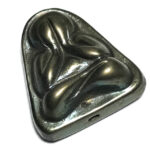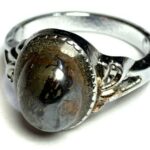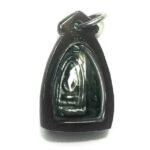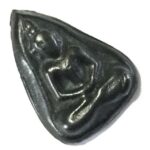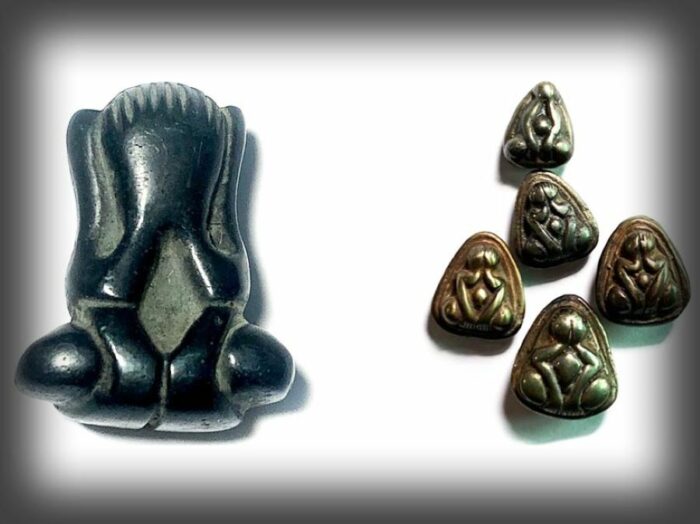
The Mystical Alloys of Ancient Thai Sorcery
Part 1: Materials and Properties
Mekaphat and Mekasit are two alchemical alloys that hold immense spiritual significance in ancient Thai sorcery. These mystical materials are incorporated into amulets, known as That Kaiyasit, which are believed to protect their owners from harm and enhance their fortune and prestige.
Throughout the ages, Thais have revered Mekaphat and Mekasit and clamored to possess them. Even today, the most common examples trade for tens of thousands of US dollars among collectors. However, due to the scarcity of materials and rudimentary production techniques of the past, these amulets are extremely rare, with only a few surviving to this day. Many pieces found in the market today are clever replicas, produced to meet incredible demand, but they lack the same mystical powers due to missteps and inconsistencies in their crafting and consecration.
In this article, we delve into the lore surrounding these two mystical alloys.
Mekaphat
According to Thai sorcery texts, Mekaphat is formed by smelting and amalgamating several metals. The resulting alloy is washed with sulfur, resulting in a shiny black appearance highlighted by a distinct blue gleam.
A lab test using XRF Spectrometer determined that Copper (Cu) and Lead (Pb) made up 99% of the total mass of the sample examined, perhaps accounting for Mekaphat’s grayish appearance.
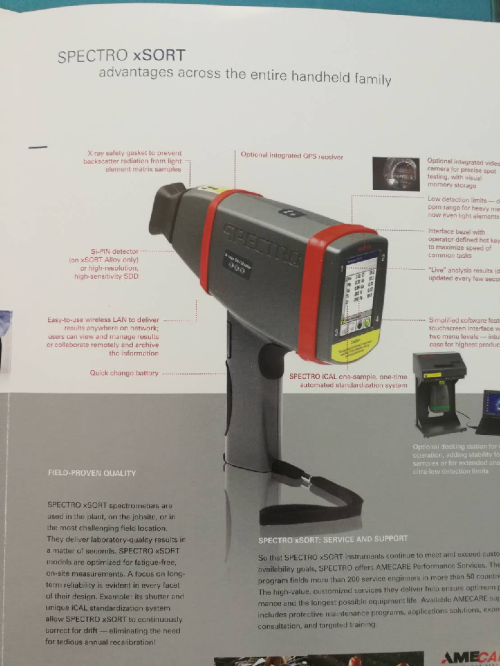
The remaining 1% consists of tin, manganese, antimony, gold, silver, nickel, selenium, and zinc, with additional materials added in accordance with each school’s prescribed texts.
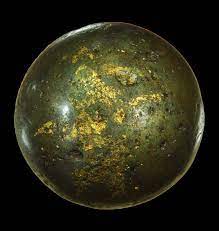 Almost all recipes involve the inclusion of a small herbal mixture, typically including Zingiber Ottensii Valeton, Smooth/Striped Rattled Pod (Crotalaria), Moke (Wrightia religiosa), Black Galingale or Stephania venosa (Blume) Spreng, and other herbs. The requisite spells are invoked while the materials are mixed. If the ritual succeeds, it results in a glossy black substance with a blue gleam that is fragile. As the Mekaphat is polished, it acquires a shade of white or indigo, which will eventually fade to gray or, in some cases, a residual blue gleam.
Almost all recipes involve the inclusion of a small herbal mixture, typically including Zingiber Ottensii Valeton, Smooth/Striped Rattled Pod (Crotalaria), Moke (Wrightia religiosa), Black Galingale or Stephania venosa (Blume) Spreng, and other herbs. The requisite spells are invoked while the materials are mixed. If the ritual succeeds, it results in a glossy black substance with a blue gleam that is fragile. As the Mekaphat is polished, it acquires a shade of white or indigo, which will eventually fade to gray or, in some cases, a residual blue gleam.
Mekaphat is imbued with significant spiritual powers, but it is in sacred and mystical objects that it truly shines. Ancient craftsmen often incorporated Mekaphat into their Phra Krueng, turning them into Phra Nur Mekaphat, which were believed to bless owners with endless fortunes (Noon Duang), invulnerability (Kongkrapan Chatree), and escape from dangers (Klaew Klad).
Mekasit
The composition of Mekasit has been lost to the ravages of time, and no one is certain what goes into it. The adepts skilled in its craft were extremely secretive, even by the standards of spiritual practitioners, and much of the information has never been publicly revealed.
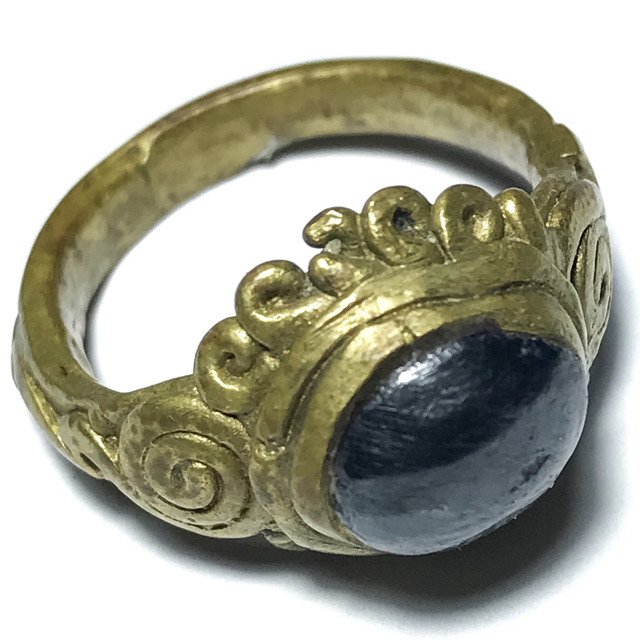
Mekasit possesses a stunning iridescence, displaying varying shades of gray-black, golden-green, reddish or purple-green, similar to the color of insect wings. Although it is known to occur in many colors, it is the golden-green examples that are the most prized.
An XRF Spectrometer analysis recently undertaken by a Thai amulet enthusiast determined that Copper (Cu) and Antimony (Sb) together made up 99% of the total mass of the sample examined. Scattered information from various sources indicates that most Mekasit comprises Silica, Sulfur, Tellurium, Lead, Silver, Zinc, Copper, and Antimony. Some Mekasit amulets also contain gold, although this is relatively rare.
Despite the various components that make up Mekasit amulets, it is the presence of Copper and Antimony that is particularly noteworthy. Both of these metals are believed to possess unique properties that make them important in traditional Thai medicine and spirituality.
Copper, for example, is believed to have antibacterial and anti-inflammatory properties, as well as the ability to conduct energy. In traditional Thai medicine, Copper is often used to treat arthritis, skin conditions, and other ailments.
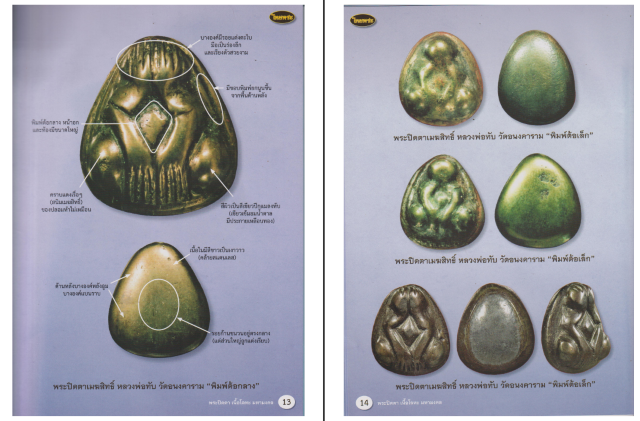
Antimony, on the other hand, is believed to possess powerful protective properties. It is often used in spiritual practices to create a shield of protection around the wearer, shielding them from negative energy and other harmful influences.
The combination of Copper and Antimony in Mekasit amulets is therefore believed to imbue these objects with powerful healing and protective properties, making them highly sought after by collectors and spiritual practitioners alike.
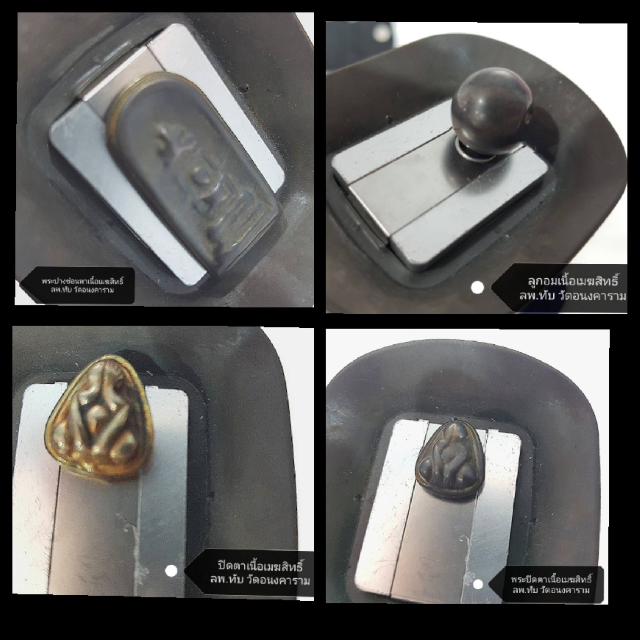
To summarize about these two highly preferred and magically powerful alchemical alloys; Mekasit amulets are an important part of Thai spiritual and cultural heritage. While the exact composition of each Master’s admixture may vary, most Mekasit amulets contain a combination of metals and minerals, with Copper and Antimony being particularly important. These amulets are believed to possess powerful healing and protective properties, and are highly prized by collectors and spiritual practitioners alike.
